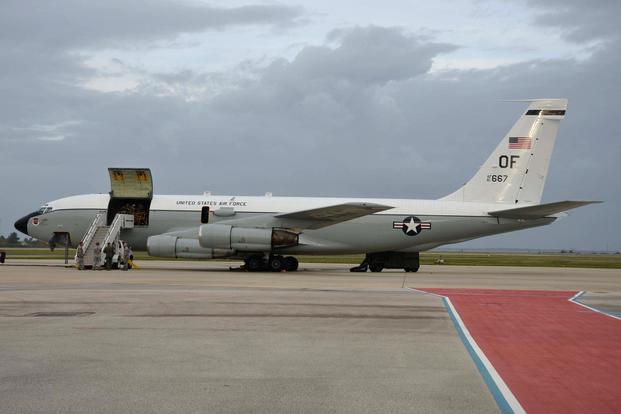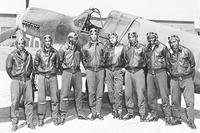The Air Force says it needs an increased availability rate for its WC-135 Constant Phoenix aircraft, known as "nuke sniffers," and that's why it's looking to convert three KC-135R tankers to do the job.
During a Senate Armed Service Committee hearing on Tuesday, Air Force Chief of Staff Gen. David Goldfein said converting three tankers will give the nuke sniffer mission a longer life, an asset for the Air Force amid unpredictable acts from America's adversaries.
"It allows us to get more time to be able to continue to accomplish this mission," Goldfein said in response to a question from Sen. Deb Fischer, a Republican from Nebraska. "Because our current airplanes are old. They're wearing out."
The aircraft belong to the 45th Reconnaissance Squadron, 55th Operations Group, at Offutt Air Force Base, Nebraska.
Related content:
- Sorry, 'Sniffer' Fans: WC-135 Isn't Smelling Russian Nukes
- Lawmaker: US Should Field New Nukes After Russia Violated Treaty
- Lockheed, Raytheon to Develop New Nuclear Cruise Missile
Goldfein continued, "Our mission-capable rates, and more importantly, our aircraft availability rates to be able to do this mission are much lower than not only the Secretary of Defense's, but [also] the combatant commander's requirement for this mission."
Goldfein said the conversion will give the fleet "more longevity for that critical mission."
The service, in its fiscal 2019 budget request, asked for roughly $208.3 million to "procure and install modification kits to convert three KC-135R aerial refueling tanker aircraft," which would help keep the nuke sniffer fleet flying through 2050.
The Air Force currently has two Constant Phoenix aircraft in its fleet, a C model and a W model, according Air Force Magazine's 2017 aircraft inventory almanac.
Studies done on the modifications requirement show that it would be "more cost-effective to convert KC-135R aircraft into WC-135Rs than to modify existing WC-135W aircraft to be on par with the rest of the C-135 variants s (i.e. RC-135 and KC-135)," the fiscal 19 request said.
The "nuke sniffers" -- a modified C-135B or EC-135C -- routinely deploy to assess radioactive particles in the atmosphere, or to train with partners and allies.
Last year, the aircraft was spotted in the United Kingdom. The sighting prompted speculation it was sent to Europe after an alleged Russian nuclear test, which caused radioactive levels to spike in areas such as Norway.
A 'nuke sniffer' also deployed to Japan in the wake of North Korea's underground nuclear tests. The most recent test occurred in September 2017.
Goldfein on Tuesday did not specify when modifications to the aircraft could be complete.
-- Oriana Pawlyk can be reached at oriana.pawlyk@military.com. Follow her on Twitter at @oriana0214.









